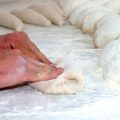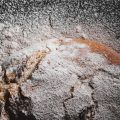Diastatic malt powder is a popular ingredient for improving the rise, texture, and flavor of sourdough bread. This natural enzyme-rich substance breaks down starches into sugars, which feed the yeast and bacteria in the dough, resulting in a stronger rise, improved texture, and better flavor in the finished bread. However, using too much diastatic malt powder can have negative effects on the bread, such as a gummy texture or an overly sweet flavor. In this article, we will discuss how much diastatic malt powder to use in sourdough bread for the best results.
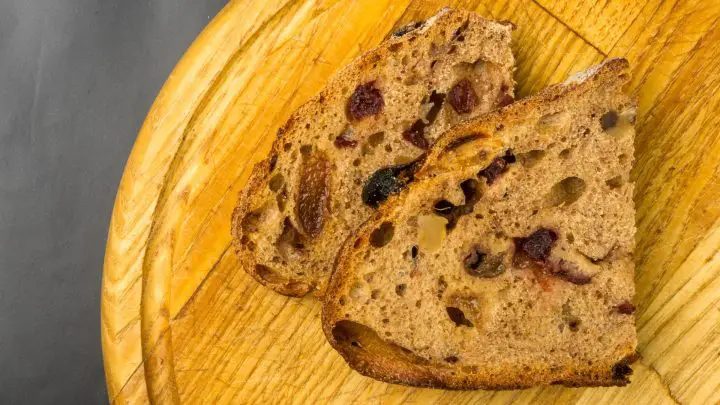
Table of Contents
- How Much Diastatic Malt Powder Should I Use In a Sourdough Recipe?
- What Is Diastatic Malt Powder?
- What Does Diastatic Malt Powder Do To Sourdough?
- When to Add Diastatic Malt To Sourdough?
- Does Diastatic Malt Powder Add Flavor to Bread?
- How To Make Homemade Diastatic Malt Powder?
- Is There a Substitute For Diastatic Malt Powder?
- Diastatic Malt Powder and Sourdough
- FAQs
How Much Diastatic Malt Powder Should I Use In a Sourdough Recipe?
The amount of diastatic malt powder to use in a sourdough recipe can vary depending on various factors, such as the type of flour used and personal preference. Diastatic malt powder is often used to improve dough fermentation and promote better rise in bread.
As a general guideline, you can start by adding 0.5% to 2% of diastatic malt powder of the total flour weight. This means that for every 100 grams of flour in your recipe, you would add 0.5 grams to 2 grams of diastatic malt powder.
It’s important to note that diastatic malt powder is quite potent. It’s recommended to start with a smaller amount and adjust based on the desired results. Too much diastatic malt powder can make the dough overly sticky or cause it to rise too quickly, leading to an undesirable texture.
Additionally, diastatic malt powder is not always necessary in sourdough recipes. Sourdough naturally contains enzymes that break down starches and improve fermentation. Diastatic malt powder is commonly used in recipes that contain a high percentage of whole-grain flour or in situations where you want to boost the fermentation process.
It’s always a good idea to experiment with small amounts and observe the effects before adjusting the quantity to suit your preferences and specific recipe requirements.
What Is Diastatic Malt Powder?
Diastatic malt powder is a natural ingredient made from sprouted grains, typically barley, that have been dried and ground into a fine powder. The sprouting process creates enzymes, such as amylase, that break down starches into simpler sugars, which can feed the yeast and bacteria in dough and improve the rise and texture of bread.
Diastatic malt powder is commonly used in baking, especially in sourdough bread, to enhance the flavor, texture, and color of the finished bread. It can also improve the shelf life of bread by retaining moisture and preventing staling.
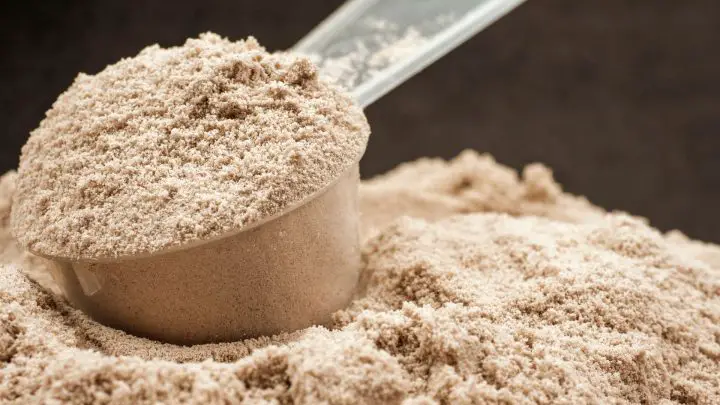
What Does Diastatic Malt Powder Do To Sourdough?
Diastatic malt powder can have several positive effects on sourdough bread.
The natural enzymes in the malt powder, particularly amylase, break down complex starches into simpler sugars. These can feed the yeast and bacteria in the sourdough starter and improve the rise and texture of the dough. This can lead to a stronger rise, larger air pockets, and a softer crumb in the finished bread.
The enzymes in diastatic malt powder can also enhance the flavor of the bread by breaking down starches into sweeter sugars. This gives the bread a slightly sweet and nutty flavor.
Additionally, diastatic malt powder can improve the crust color and prevent staling, which can result in a longer shelf life for the bread.
When to Add Diastatic Malt To Sourdough?
Diastatic malt powder can be added to sourdough bread at different stages of the baking process, depending on the desired effect.
Here are some common times to add diastatic malt powder to sourdough:
- To the dough: Diastatic malt powder can be added directly to the dough during mixing or kneading. This allows the enzymes in the malt powder to break down the starches in the flour, which can improve the rise and texture of the dough.
- To the starter: Adding diastatic malt powder to the sourdough starter can help kickstart the fermentation process by providing a food source for the yeast and bacteria in the starter. This can result in a stronger, more active starter and a better rise in the dough.
- To the water: Diastatic malt powder can also be dissolved in the water used to mix the dough. This can help evenly distribute the enzymes throughout the dough and improve the overall texture and flavor of the bread.
Again, it’s important to note that diastatic malt powder is a powerful ingredient. Adding too much can have negative effects on the bread, such as an overly sweet flavor or a gummy texture.
As a general rule, it’s recommended to use no more than 1-2 teaspoons of diastatic malt powder per 3 cups of flour in a sourdough recipe.
Does Diastatic Malt Powder Add Flavor to Bread?
Diastatic malt powder is primarily used to enhance fermentation and dough performance in bread baking, rather than adding flavor. Its enzymes break down starches into sugars, promoting better rise and texture.
While it doesn’t have a strong flavor itself, the increased fermentation can subtly contribute to a sweeter taste. However, the impact on flavor is generally minimal compared to other ingredients.
To add specific flavors, it’s more common to use herbs, spices, nuts, seeds, or other enhancers. In summary, diastatic malt powder improves bread dough but plays a minor role in flavor enhancement.
How To Make Homemade Diastatic Malt Powder?
Making homemade diastatic malt powder involves sprouting and drying grains to activate the enzymes that convert starches into sugars.
Here’s a basic process to make it at home:
- Choose a grain: Common choices include wheat, barley, or rye. Whole grains are preferred over processed ones.
- Soak the grains: Place the grains in a bowl or container and cover them with water. Let them soak for about 12 to 24 hours to initiate the sprouting process.
- Drain and rinse: Drain the soaked grains and rinse them thoroughly with fresh water.
- Sprout the grains: Spread the grains evenly on a tray or in a sprouting jar lined with a moist cheesecloth or paper towel. Keep them in a dark, warm place, and rinse and drain them twice a day. Sprouting usually takes around 2 to 3 days, but the timing may vary.
- Dry the sprouted grains: Once the sprouts have grown to about the same length as the grain itself (1/4 to 1/2 inch), it’s time to dry them. Spread the sprouts on a baking sheet and dry them in a low-temperature oven (around 120°F or 50°C) or a food dehydrator until they are completely dry and brittle. This can take several hours to a day or more.
- Grind into powder: Once the sprouted grains are fully dried, use a coffee grinder, spice grinder, or a high-powered blender to grind them into a fine powder. Make sure the powder is uniform in texture.
- Store properly: Transfer the homemade diastatic malt powder to an airtight container and store it in a cool, dry place. It should stay fresh for several months.
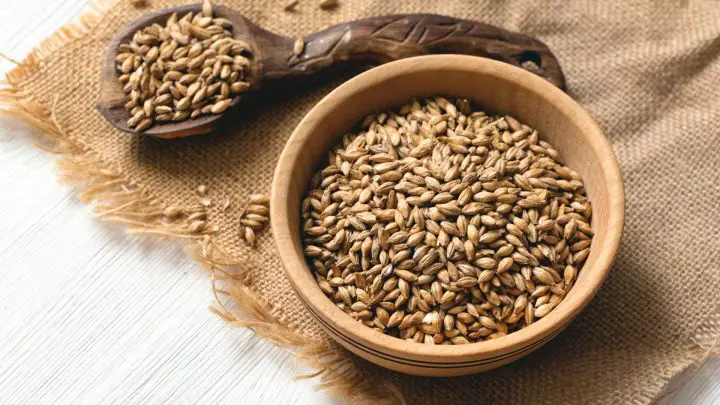
Is There a Substitute For Diastatic Malt Powder?
Yes, there are a few substitutes for diastatic malt powder that you can use in bread baking. Here are some options:
- Barley malt syrup: Barley malt syrup is made from sprouted barley grains and is a common substitute for diastatic malt powder. It contains active enzymes that can enhance fermentation and improve bread texture. Use it in a 1:1 ratio as a replacement for diastatic malt powder.
- Honey or molasses: While honey and molasses don’t contain the same enzymes as diastatic malt powder, they can provide some extra sweetness and moisture to the dough, which can aid fermentation. Use them in a 1:1 ratio as a substitute.
- Brown sugar: Brown sugar contains a small amount of molasses, which can contribute to a slightly enhanced fermentation. It can be used in a 1:1 ratio as a substitute for diastatic malt powder.
- Active sourdough starter: If you already have an active sourdough starter, it naturally contains enzymes that break down starches and improve fermentation. Using a mature sourdough starter in your recipe can help achieve similar effects as diastatic malt powder.
Diastatic Malt Powder and Sourdough
When using diastatic malt powder in sourdough bread recipes, it is recommended to start with 0.5% to 2% of the total flour weight. However, it’s crucial to adjust the quantity based on personal preference and the specific recipe.
Experimentation and careful observation will help determine the ideal amount for optimal results.
FAQs
How Much Malt Powder Is In a Loaf Of Bread?
The amount of malt powder used in a loaf of bread can vary depending on the recipe and personal preference. Typically, malt powder is added in small quantities, ranging from 1 to 3 tablespoons per loaf. It is primarily used to enhance flavor, promote browning, and improve the texture of the bread.
How Much Non-Diastatic Malt Powder to Add To Bread?
When using non-diastatic malt powder in bread recipes, it’s recommended to add around 1 to 2 tablespoons per loaf. However, it’s important to follow the specific recipe instructions as different recipes may have varying requirements. Adjust the amount based on your taste preferences and desired outcome for the bread.
Is There a Substitute For Diastatic Malt Powder?
If diastatic malt powder is not available, you can use alternatives to achieve similar effects in bread baking. Barley malt syrup, honey, or molasses can be used as substitutes, although they may contribute slightly different flavors. Adjust the amount according to the recipe instructions, keeping in mind the sweetness level and the desired outcome.




